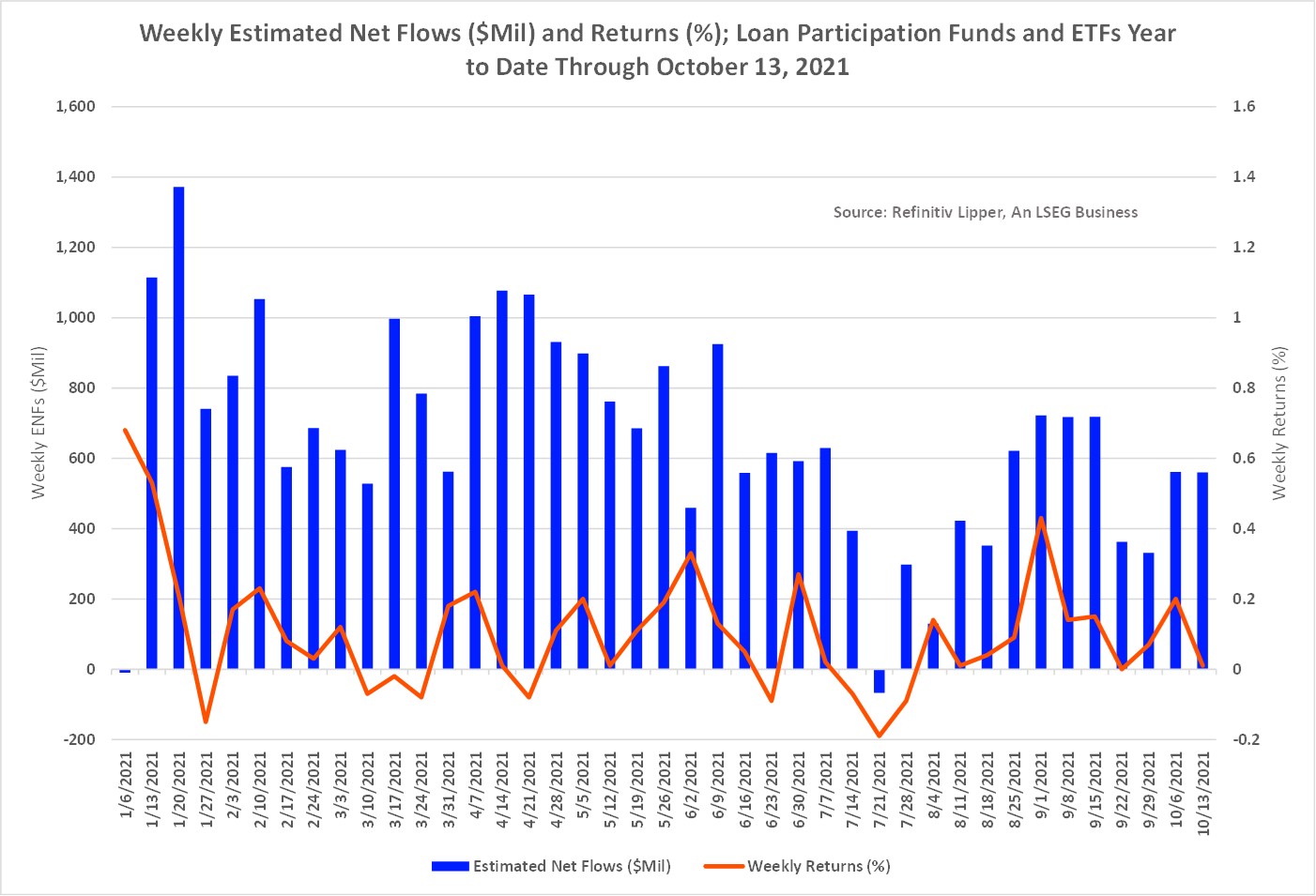Easy monetary policies implemented by the Federal Reserve Board to help grow the economy during the COVID-19 pandemic, coupled with calls for new government spending packages and supply chain disruptions, have exposed traditional bond funds to rising interest rates and inflation. This has prompted investors and their advocates to consider the benefits of Loan Participation Funds (aka floating rate loan funds, bank loan funds, and leveraged loan funds).
Year-to-date through the Refinitiv Lipper fund-flows week ended Oct. 13, 2021, investors have injected a net $36.7 billion into Loan Participation Funds (including ETFs)—the classification’s strongest inflows since 2013—attracting net new money in 40 of the last 41 weeks.
Loan Participation Funds can be an attractive alternative asset class for investors seeking high income generation and added portfolio diversification. While the average taxable fixed income fund posted a 0.56% return year-to-date, Loan Participation Funds have chalked up the second strongest return (+4.06%) of the classifications in Lipper’s taxable fixed income universe—bettered only by High Yield Funds (+4.40%).
Loan Participation Funds generally purchase loans made by banks and other financial institutions that pay interest based on a floating rate that adjusts periodically based on a publicly available, short-term, referenced interest rate.
Unlike traditional bonds whose value decline when interest rates rise and vice versa, floating-rate debt interest rates will usually rise or fall in tandem with the referenced rate, however, often with a lag because of delayed reset rate periods, as well as interest rate caps and floors. The income of these funds usually comprises two parts: the short-term reference rate that floats with the market and a fixed spread over that rate.
Subsequently, for investors who believe that higher interest rates may come sooner than expected, this type of debt is far less sensitive to rate rises across the yield curve.
Bank loans are usually senior secured debt and are often rated below investment grade because of the borrower’s ability to repay the loan is viewed as speculative—so they are not for the faint of heart and are usually only one segment of a well-diversified fixed-income portfolio.
Since floating-rate debt is often only reviewed by a small subset of analysts, investors benefit from the expertise found in actively managed Loan Participation Funds whose management teams can achieve comparably strong risk-adjusted returns by minimizing default risk, taking advantage of changing risk profiles, and creating a well-diversified portfolio of floating-rate securities.
That said, though, the top attractor of investors’ assets in this space was the SPDR Blackstone Senior Loan ETF (NYSE:SRLN), which took in $5.4 billion so far in 2021. SRLN received a Lipper Leader rating for Consistent Return (risk-adjusted return) of 5 (the strongest rating) for the three-year period ended Sept. 30, 2021, and posted a year-to-date return of 4.48%.
Attracting the next largest sum of net new money year to date was Fidelity Advisor® New Insights Fund Class I (FFRIX), taking in $3.1 billion (including all shares classes), also receiving a Consistent Return rating of 5 and chalked up a YTD return of 5.01%, followed by T. Rowe Price Institutional Floating Rate Fund (RPIFX) attracting $2.4 billion YTD (including all share classes), which also received a Consistent Return rating of 5 and returned 3.98% so far this year.

